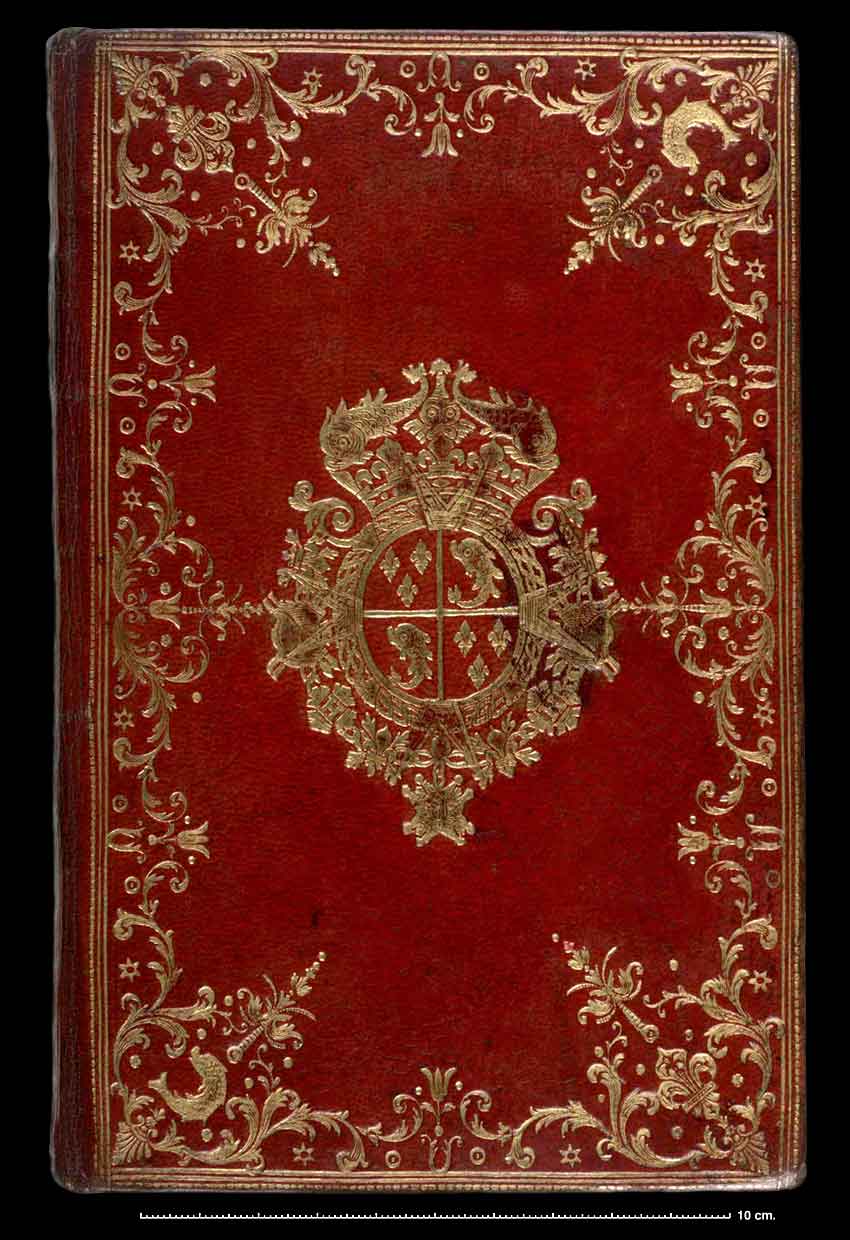


| The binding shown above is found in the British Library Database of Bookbindings, shelf marked as Davis 567, if we enlarge the imprint found in the corners of the dentelle we see that it is probably the mm-2 imprint that we have looked at on the previous page |
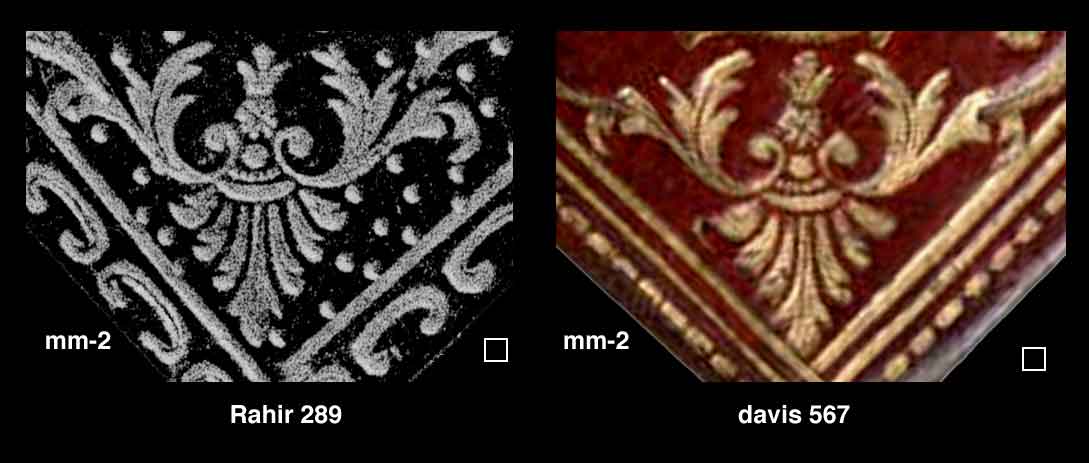
| Mirjam M. Foot, in her most recent book: The Henry Davis Gift A Collection of Bookbindings Volume III: A Catalogue of South-European Bindings, has described Davis 567 as A Paris binding, possibly by Nicolas-Denis Derome le jeune c. 1770-4. I include the text here rather than risk misquoting this description. |
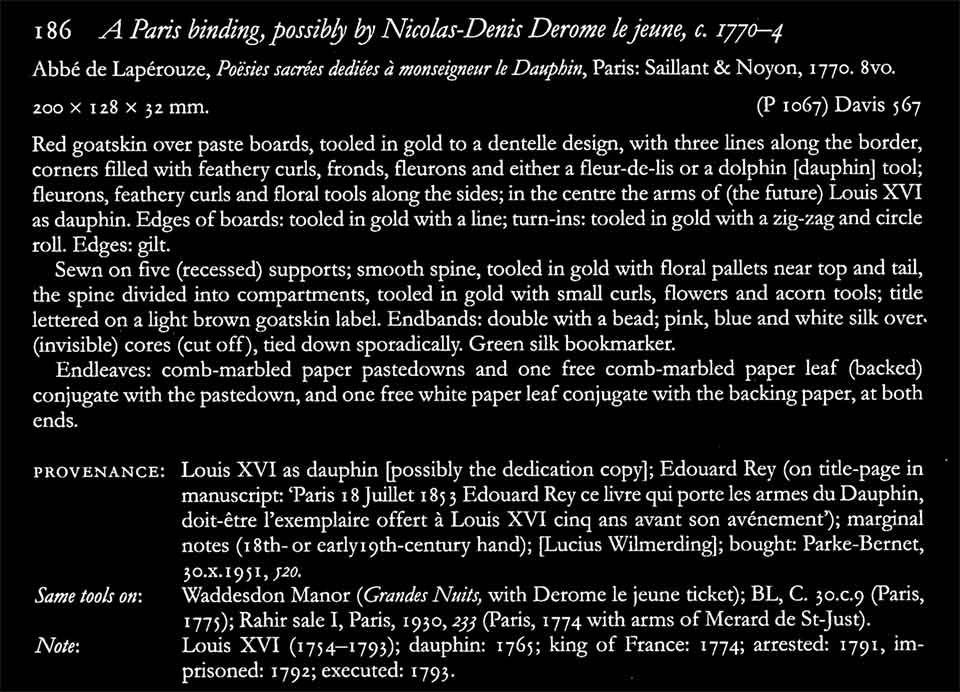
| I would disagree with the idea that Davis567 is possibly by Derome le jeune as there is not a single Derome imprint to be found on this binding . Certainly there are no obvious Derome imprints and only a few that are so small it would be hard to tell the difference, however there is a difference as will be obvious in the comparative diagrams below. I propose that we compare the tools of Rahir 233 which Mirjam has listed as having the same tools as davis567. I agree that there appears to be identical tools on the Rahir 233 and Davis 567 bindings, these are not however the tools of Derome. I have located a good comparative Derome binding from the same period that is similar in size and dentelle configuration and is also another excellent reproduction from the Rahir catalogue, Vol. III, 1935, item 709, c.1773. |
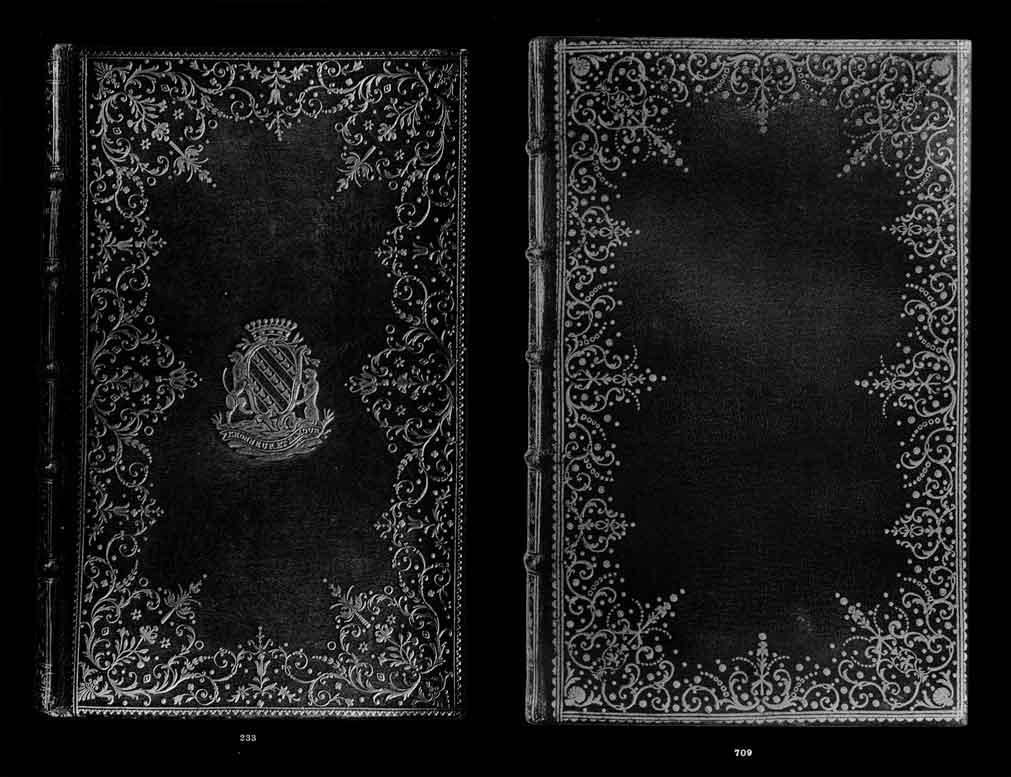
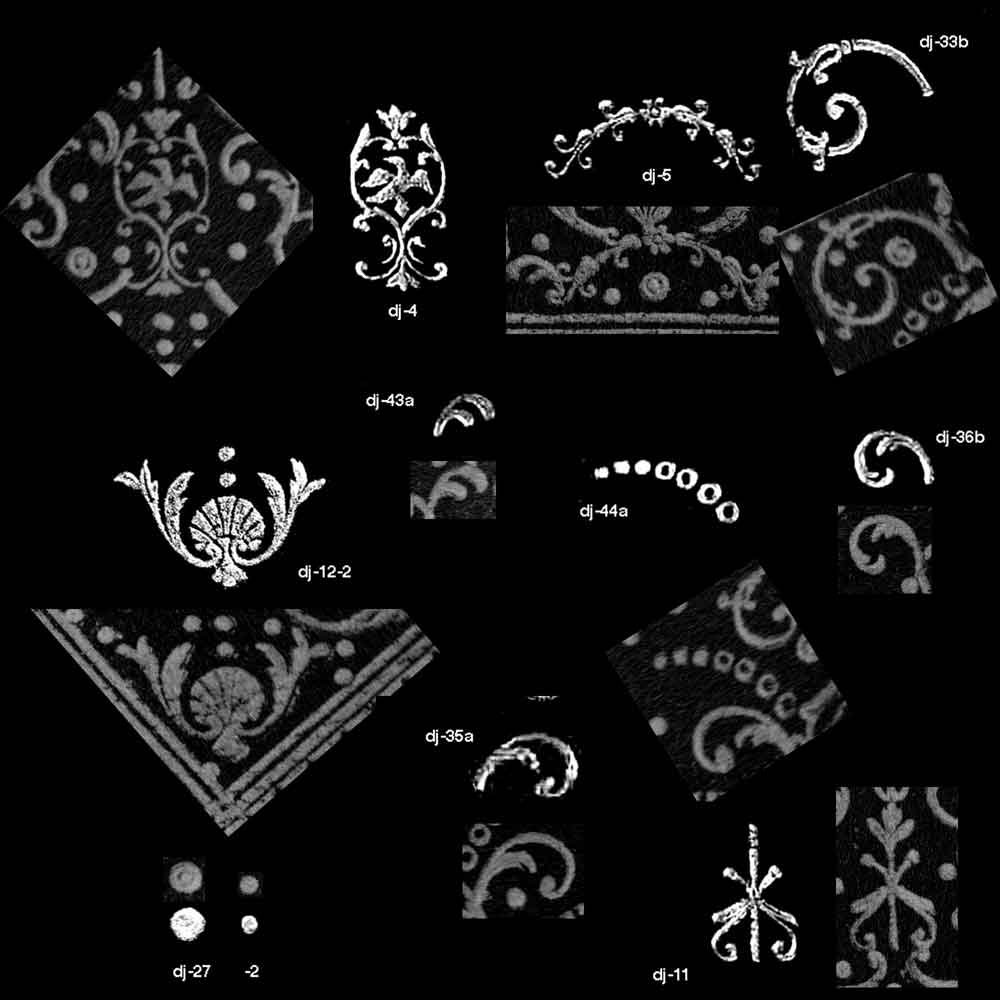
| In Comparative Diagram 2 I have randomly selected some imprints from the Rahir 709 binding and compare them with imprints from our Derome le jeune catalogue (click here to see this catalogue). We can see that there is a 99% chance that 709 is a Derome binding. Now what I want to do is compare the 233 imprints with the 709 (Derome) imprints to see if there are in fact. any identical tools. |
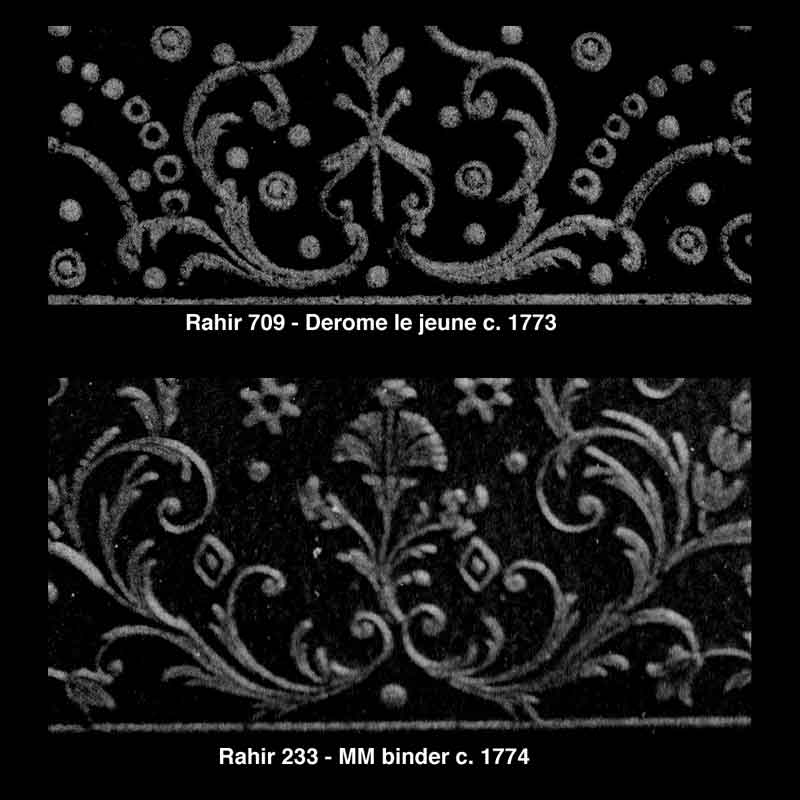
|
In Comparative Diagram 3, we do not see any identical tools, we see some similar design elements and tools of similar forms, the 233 tools being more sophisticated and better formed with similarities to certain Jubert and Douceur tools. We will examine below, the closest imprint match of any imprint on the 233 binding, this is a small 2 stem spiral, the Derome tool is nearly identical, the most obvious difference is that the point where the second stem issues from the bud. In the mm-33b example the stem appears to come from the mouth of the bud where as the Derome second stem appears to issue from under upper the lip of the bud. The mm tool is better formed and the spiral more complete and voluminous. When we observe that these tools are not the same but are very nearly the same, it is a sure sign that this is not the same binder. |
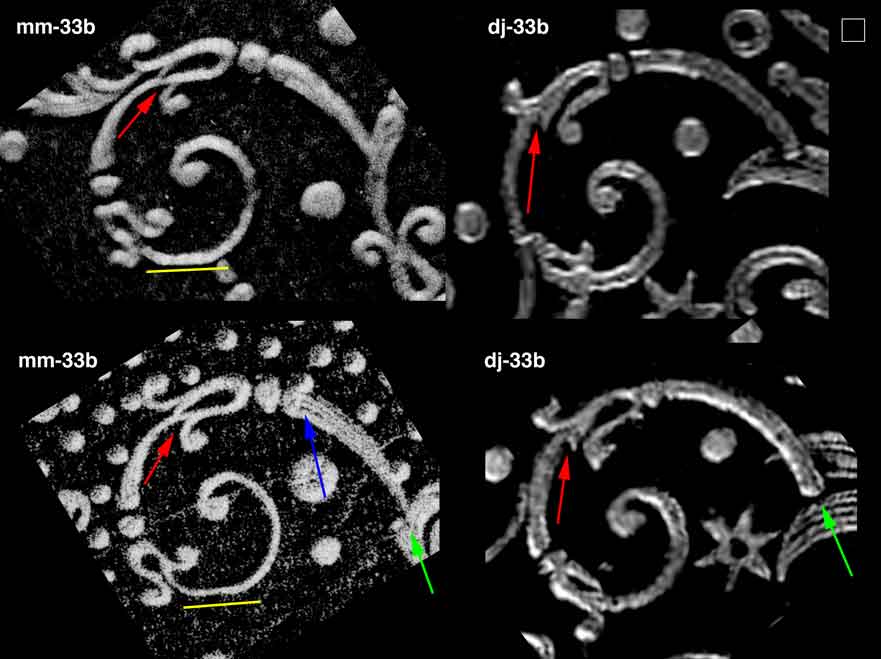
| In Comparative Diagram 4, we are actually looking at a 600 dpi enlargement, if you click on this image you will see a 1200 dpi enlargement. The red arrows indicating a difference of insertion point (or issuing point). The yellow line indicating a slight flaw or irregularity in the spiral that can actually only be seen clearly at high resolution. The curve of the spiral appears slightly flattened or angular. The blue arrow indicating another feature that can only be seen at high resolution, the stem is fluted (see the enlargement). The green arrow indicating a difference in the base of the stem, the Derome stem is blunt and thick where as the MM stem tapers to a near point. In general then the stem thickness of the Derome tool is quite uniform where as the MM stem tapers and is fluted. In Comparative Diagram 5 below, we see more small tool comparisons. |
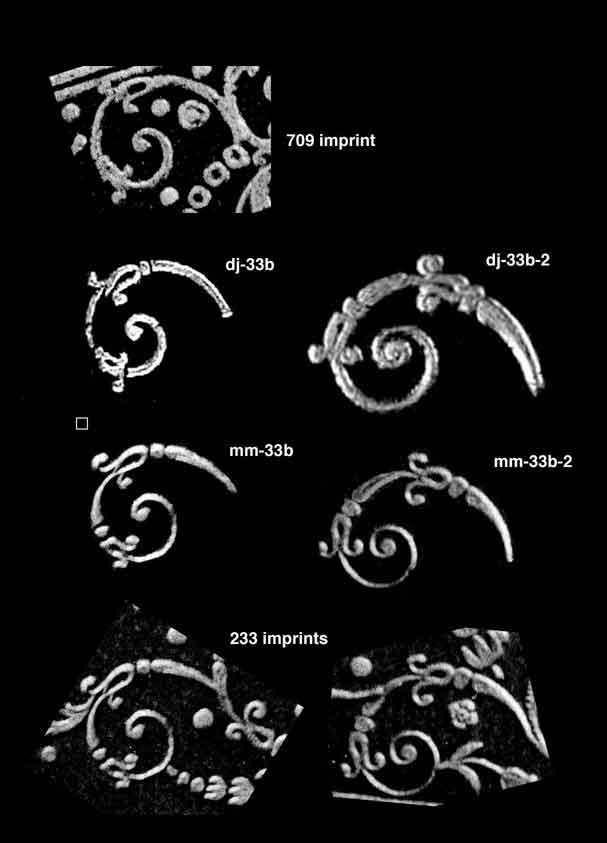
|
I have been working long and hard on the next page, a catalogue of the MM binder tools. This catalogue, which is but a collection of the imprints on several bindings made with identical tools. Yet even within such a small number of bindings, the range of tools is astonishing, more elaborate than the tools of Derome or even Dubuisson, but closely paralleling the tools of Jubert. Another important and interesting feature of the work by this binder is his use of a technique that had a brief success in the mid 16th century, that is, the additional application of hundreds of small gold dots to fill empty spaces. This gives the work a very different and luxurious aspect. Thus certain examples of his work can easily be recognized, even in the jungle of a thousand other dentelles, simply because of this intensive application of gold dots. |

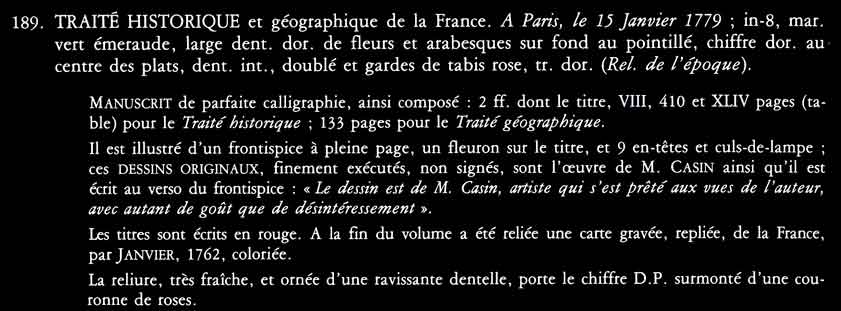
| information about the author | visit cyclopaedia.org |